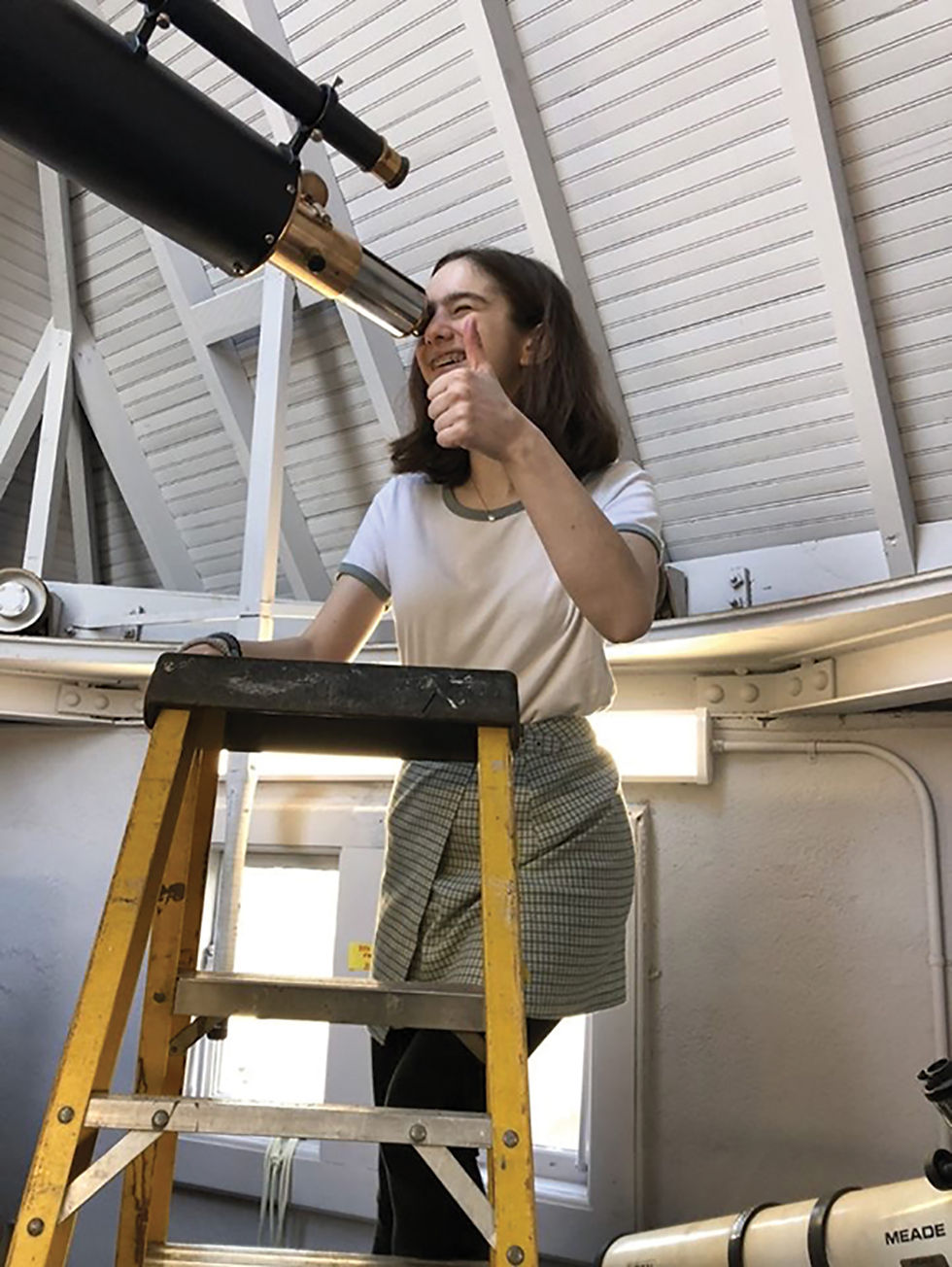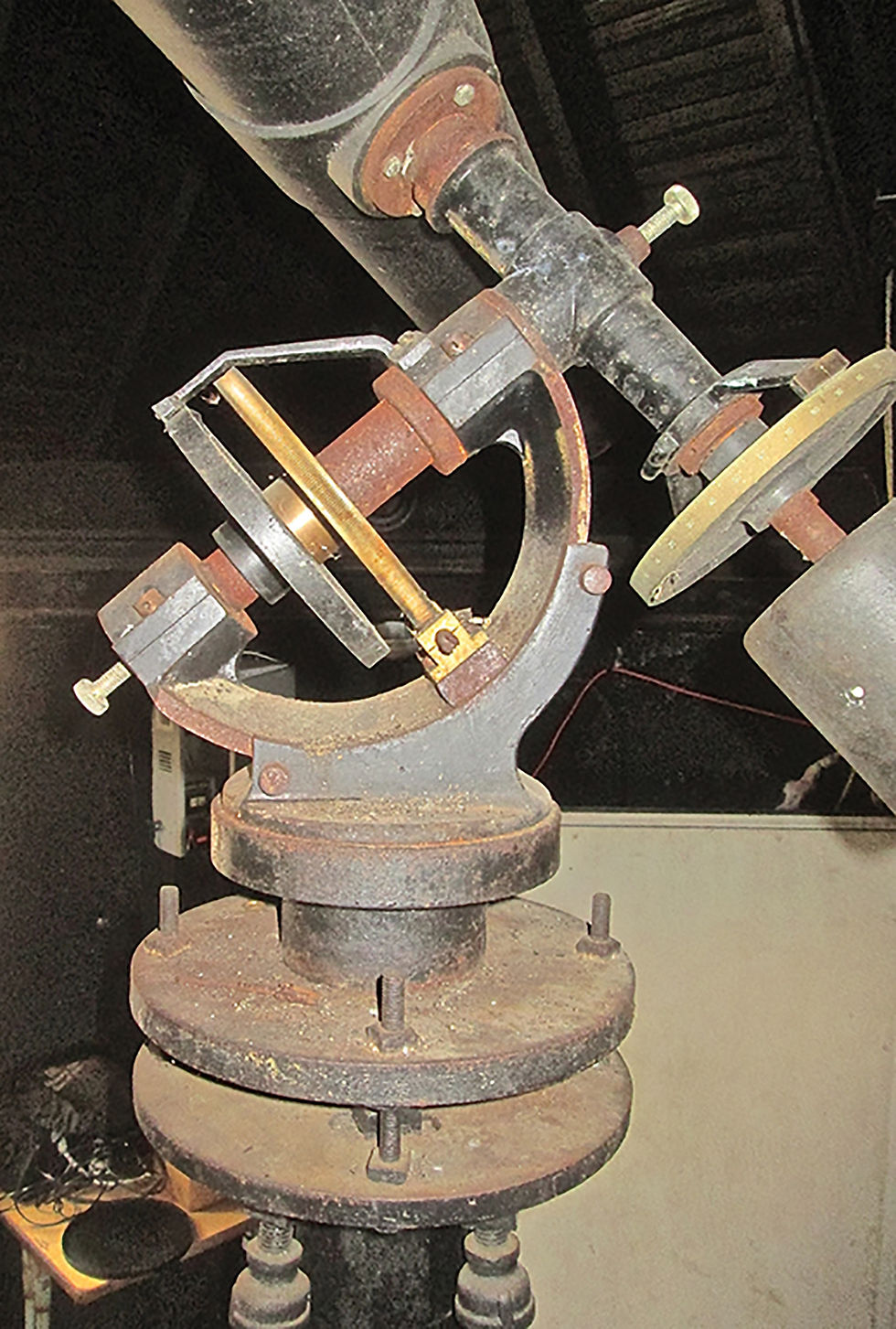A PLACE FOR SPACING OUT by Ellen Donker
- ellencdonker
- Aug 14, 2020
- 4 min read
Columbia High School’s astronomical observatory is restored

Humanity has long been enthralled with observing the cosmos in an effort to make sense of the universe. But it wasn’t until Galileo pointed a telescope at Jupiter 400 years ago that our view of the universe was forever changed through direct observation of the skies. Humans have been peering through telescopes ever since – including members of Columbia High School’s astronomy club.
This fall, the club will be entering an exciting phase: They’ll be able to use the school’s original telescope in the refurbished observatory, thanks to a restoration project started in 2018.
Of course, it comes as a surprise to many that our high school even has an astronomical observatory. Built on top of the school’s tower, it sits eight stories, or 108 steps, above the ground floor. Even more astounding to those knowledgeable about astronomy is that the observatory contains a Brashear telescope. It was given to the school by a generous donor in 1927 – it was second-hand – and is believed to have been manufactured around 1910.

Sadly, the observatory has gone through recurring cycles of neglect. Certainly its location helps to keep it a secret: Few are willing to travel the narrow staircases and a short list of people are authorized to have a key. Ultimately, though, it requires a champion to make sure it’s maintained and put to use.
The observatory got that champion when Dr. Jeffrey Charney was hired as a consultant for human resources. In addition to his regular duties, he was tasked by interim superintendent Dr. Thomas Ficarra with overseeing the rehabilitation of the observatory and the telescope. A science educator and an amateur astronomer, Charney recalls that he was in disbelief when told the school had a Brashear. By his estimates, only 15 or so exist on the planet.
“South Orange/Maplewood should know about the jewel they have,” says Charney. “[CHS is] probably the only high school with a Brashear.” What’s more, very few schools can boast of an observatory.
When Charney first scaled the narrow flights of stairs to view the observatory he says the space looked abandoned. Over the years, pigeons and rain had found their way through the roof slats of the dome and the side of the clock tower below. Filled with droppings and feathers amidst other detritus, the space was a mess, and the retractable roof and telescope were inoperable.
Armed with a $40,000 budget to restore the space and equipment, Charney connected with Bart Fried, another astronomy enthusiast who had worked on the telescope in the late ‘80s. Fried helped him navigate the small community of those qualified for this specialized type of work in order to request bids. Charney chose Fred Orthlieb, a professor emeritus of mechanical engineering at Swarthmore College, and one of the world’s experts on antique telescope restoration. So began the work of dismantling and moving the telescope to his workshop in Swarthmore while also overseeing the renovation of the observatory.

As with most old structures, once Orthlieb became more involved with the observatory, he found that pieces of hardware from decades past were missing or hopelessly broken – such as the rollers that helped the roof retract – adding unanticipated complexity to the project. Soon enough, though, the dome could open, 15 degrees per hour, after being stuck in a closed position for more than 40 years. The space was cleaned and painted a battleship gray; pigeon-proofing was installed on several floors, and security cameras added.
During different stages of the restoration, Charney and Orthlieb spoke to the astronomy club about its progress. Many of the details were highly technical, but the students gained a new appreciation for the telescope, the space, and how they would be able to use it. Physics teacher and astronomy club advisor Anthony Silvestri says, “All the credit should go to Dr. Charney: Right away, he saw the gem that we had up there.”
Although the telescope is more than 100 years old, it is still considered one of the finest instruments available. After various repairs were made and the lens was cleaned and polished, Orthlieb computerized the Brashear with cutting-edge technology to bring it into the 21st century. Now viewing a galaxy is as simple as typing in a location for the telescope to focus on, provided, of course, that the weather is clear and someone opens the dome and rotates it into place when the galaxy is visible. What’s more, the software tracks and records the images on a server so they can be downloaded.
As a science educator, this is the piece that gets Charney particularly animated. “My vision was really to make this a workhorse,” he says. “Unless schools get excited about it, the observatory will go fallow.” To help promote the observatory, he spoke to principals and teachers (many didn’t even know it existed) about how they could use the telescope in the classroom, especially now that astronomy is part of the NJ learning assessment for grades K-6.
Charney would love to see the day when students can order up images as part of their research. Of course, this would require that a system be put in place for a group to accept programming requests. The astronomy club, with oversight from a faculty member, might be just the group to do so.

Fried believes the investment “will pay back in spades” and predicts that what the astronomy club members observe with the refurbished telescope will stun them. Describing the club as being more active than most high school astronomy clubs, he credits the members for being self-motivated, attending astronomy lectures and conferences on their own. He says, “Personally, I think the secret to success for this entire endeavor is for the school to strike up a relationship with one of the several really good astronomy clubs in the North Jersey region.”
Charney finished his contract with the district in the spring of 2019 after most of the work had been finished. By March 2020, the observatory was ready to be used. Carrie Hill, class of 2021 and president of the astronomy club, explains that just as the club had started to learn how to use it for organized observations, the coronavirus hit.
Looking to the future, Hill says, “It would be awesome if we could use it in classes outside of the club. There’s so much opportunity. It’s unimaginable what we’ll be able to do now.”
Ellen Donker is looking forward to seeing the telescope in action and welcomes an invitation from the astronomy club.







Reaching out to Ellen Donker,
The telescope is back up and running and the astronomy club would like to welcome you back for a follow up article. We have club meetings Thursdays at 3 pm in room D200. We have evening events up in the tower about once a month, weather permitting.
My email is rpost@somsd.k12.nj.us
-Randall Post, Astronomy Club Advisor, Coulumbia High School